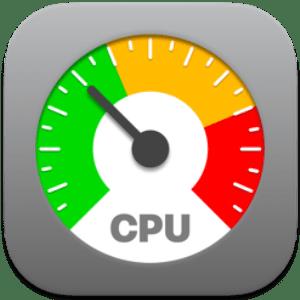

You can either do that in Activity Monitor, or in Terminal.app with the ps command - e.g. # Pass -kill as argument to kill all running cputhrottlesĮcho "Looking for running cputhrottles."Įcho "Run this script passing '-kill' as argument to remove all cputhrottles."Īlthough not a direct answer to the OP's question, if you're having an issue with a particular process taking up too much of your CPU time, and making your computer unusable, and you don't mind how long that process takes to finish the task it's working on, you can use the renice to alter the priority of that process, making it behave nicely (hence the name).įirst, you need to find the PID of the process that's using up the CPU resources. #!/bin/bashĮcho "Please run this script as root/sudo" The script assumes that both cputhrottle and pidof are installed before running it. I've also added the option for killing all cputhrottle processes. The main difference is that you can add cpu limit per application, and it will run only once per application. This new script also allows you to specify a list containing the application name and the CPU limit for it. I've added a different version for this script (a bash script), which might be useful for people looking for limiting the CPU for multiple applications. Run it as a script, in an Automator workflow, whatever: # Get the Process/App names from Activity Monitor and put them here
App tamer alternative how to#
I'm not quite sure how to turn this into a login item since cputhrottle requires superuser permissions.
App tamer alternative series#
You can monitor a series of processes by name by running the Bash script below. Head over to the official documentation, which has a great getting started tutorial available.Īlso check out the ZODB GitHub for more info.Cputhrottle is the tool you need.
ZODB setup and configuration is a bit more involved and thus requires a few more steps to get off the ground. Having the ability for one library to solve many different database problems can really simplify development in larger projects. You can also spin up things like in-memory databases very quickly.Īlthough ZODB is overall a more complex option, it provides a lot of flexibility and can be a great option if you expect your project to grow more in the future. The system is incredibly modular and allows you to easily swap in different storage backends to suit an ever evolving application. Using ZODB you can take advantage of a multitude of both storage types and configuration options. This project is part of the Zope family, which offers many open-source web application servers. ZODB is a slightly more complex object-oriented storage option. The official h5py GitHub has a wealth of information available as well. This post shows just how useful HDF5 and the h5py project can be for getting up an running with a simple data store. The HDF Group, which is the official organization developing and contributing to the HDF project wrote a fantastic blog post titled: HDF5 as a zero-configuration, ad-hoc scientific database for Python.

You can also setup Numpy data types directly in the store as well.

If you’re using Numpy and crunching a lot of numbers then this fast and efficient data store is one the better options.
App tamer alternative code#
In fact, the h5py project makes it incredibly simple to get started with.Ĭheck out the code below for a quick way to store some data in and read from HDF5 in Python: #!/usr/bin/python3 import h5py store = h5py.File("store.hdf5", "w") dataset = store.create_dataset("test", (10,), dtype='i') dataset = 1 dataset = 2 dataset = 3 print(dataset) print(dataset) print(dataset) You don’t have to be a supercomputer scientist to use this as a way to store data in Python, though. This was originally developed as a way to standardize the distribution and sharing of massive portions of scientific data. The Hierarchical Data Format (or HDF5) is a high-performance way to store a huge amount of data.


 0 kommentar(er)
0 kommentar(er)
